How did the Kushans lose their Empire and vanish : Pax Kushana Mysteries
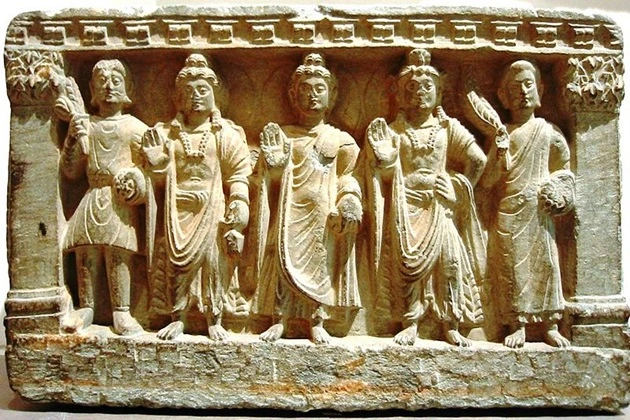
In the heart of Central Asia, in ancient times, there was the mysterious Kushan Empire, a once powerful civilization that flourished at the dawn of our era. At that time, its influence extended to the arid landscapes of modern Uzbekistan, Afghanistan, Pakistan, and some parts of northern India. The Kushan Empire was the crossroads of culture and trade on the ancient Silk Road, which intertwined East and West. Two centuries of peace and prosperity have given history to the great Pax Kushan Empire. Why did she disappear, leaving almost no trace?
The Kushan Empire and its finest hour
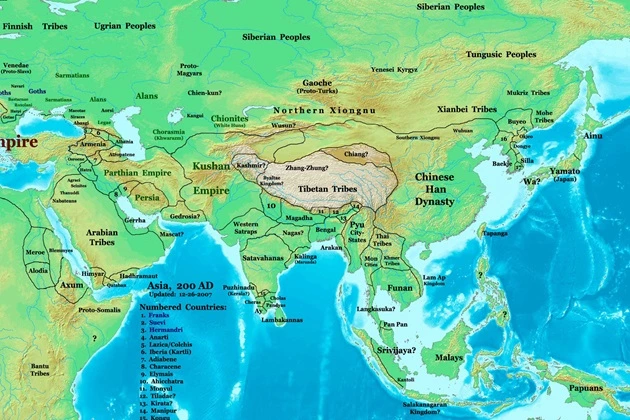
Nomads formed the Kushan Empire. Migration in the ancient world was a common model of society. A complex combination of factors, such as conflicts with neighboring tribes and the temptations of new territories, caused them. Historians believe that the Kushans are descendants of another mysterious nomadic Yuezhi people. Once, they had to leave their homeland in the west of modern China and move to new lands. Over time, the structure of the state began to take shape, and the tribe began to form profitable political alliances. It gradually turned from nomads into a settled, organized society with centralized power.
The Yuezhi constantly interacted with other peoples and cultures along the ancient Silk Road. Under the influence of such a rich palette, the Kushan Empire emerged, combining the best achievements of the West and the East, creating a unique blend that would later manifest itself in Art, culture, and public administration. Prominent rulers expanded the Empire’s borders, and Kushan’s status and influence became more tangible.
Building the Foundations of an Empire
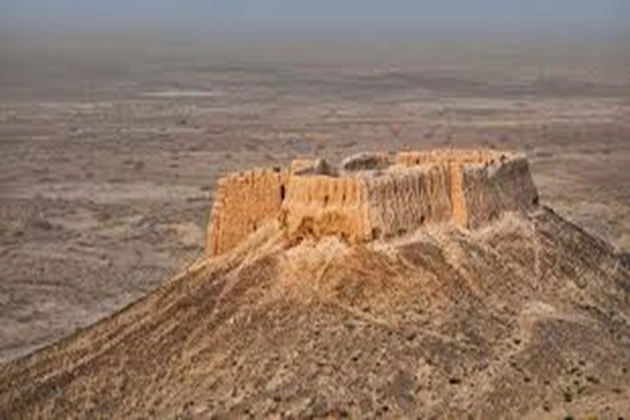
The Kushans are mostly a historical mystery. Their identity remains largely a mystery, although it is generally accepted in the scientific community that they were of Indo-European origin. There are many theories about this. Some historians hypothesize that the Kushans may be related to the ancient Tokhars of the Tarim Basin or be a mixture of Iranian and Indo-European peoples. The main version is the origin of the Yuezhi Confederation, mentioned in ancient Chinese writings.
As these tribes moved westward towards Bactria, they displaced other peoples. Thus began the gradual spread of the Kushan territories, forming a vast empire. Visit. A F R I N I K . C O M . For the full article. The geographical territories of the Kushan Empire encompassed the strategic and diverse lands of Central Asia and northern India. The territorial scope of the Empire changed over time, reflecting its rulers’ military conquests and political dynamics. The Empire included the following regions: Bactria (part of modern Afghanistan, Tajikistan, and Uzbekistan), Gandhara (part of modern Pakistan and eastern Afghanistan), Northern India, and part of Central Asia.
The capitals of the Kushan Empire changed over time, reflecting the strategic and administrative needs of the rulers. Initially founded in Kapisa (modern Bagram, Afghanistan), the capital was later moved to Purushapura (modern Peshawar, Pakistan), indicating the expansion of the Empire to the south. The geographical size of the Kushan Empire made it a melting pot of diverse cultures and religions. The Empire’s ability to control key trade routes contributed to its prosperity and played a crucial role in transferring ideas and goods between different civilizations. However, this vast territorial space also created problems in governance and defense, factors that greatly influenced the historical trajectory of the Empire.
Culture, Art, and Religious Freedom in the Kushan Empire
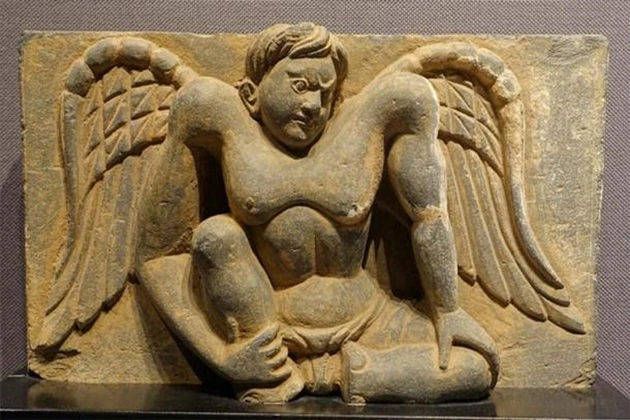
The Kushan Empire was distinguished by the incredibly remarkable combination of diverse cultural and religious influences woven into a unique tapestry reflecting the Empire’s position as a crossroads between East and West. Kushan actively promoted the fusion of Hellenistic, Persian, and Central Asian traditions. This is vividly reflected in the visual arts, architecture, literature, and religion. The main feature of the Empire was its religious freedom. All the known religions of the world peacefully coexist here. The Kushan pantheon of gods included all the pagan gods of the Ancient World. The most popular religion was Buddhism. This was reflected in the Art of the Empire.
The rapid rise and equally rapid decline of the Kushan Empire
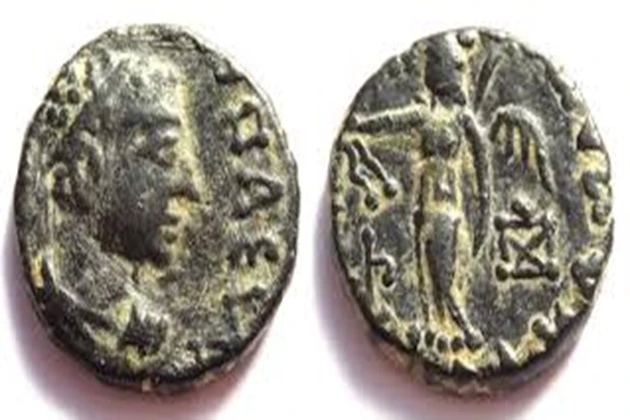
The decline of the Kushan Empire was a complex process influenced by a combination of internal and external factors that gradually weakened its once-powerful influence. The Empire became strong under the able rule of the emperors Vima Takto (90-113 AD) and his successor Vima Kadfiz (113-127 AD). After him came Kanishka the Great (from 127 to 151 AD), during whose reign the Empire reached its heyday. However, his grandson Vasudeva (190-230 AD) was considered the last great Kushan emperor and probably faced the threats of new external enemies. This led to the gradual fall of the mighty but short-lived Kushan Empire.
The Sassanid Persians came from the west, the Indian Guptas came from the east, and the Hunnic tribes threatened from the north. In the middle of the 3rd century AD, the Sassanids, under the leadership of Shapur I, invaded and seized control of a significant part of the Kushan territory. These invasions limited the Empire’s ability to maintain its territorial integrity. The internal struggle in the Empire did not contribute to the development either. All the internecine wars for the throne weakened the Kushans.
Changes in trade routes and economic dynamics also contributed to the economic decline of the Kushan Empire. The Silk Road, a vital artery of the Empire’s prosperity, has undergone changes that have negatively impacted the Kushans’ economic power. It is also necessary to consider the ongoing migrations of people looking for new lands for settlement. The nomadic invasions destabilized the already shaky fortunes of the Empire. As a result of all these conflicts and external pressure, the Kushan Empire gradually disintegrated into smaller semi-autonomous regions. The local rulers established their independence, and the centralized power of the Kushans quickly weakened.
The Decline of a Once-Great Kingdom
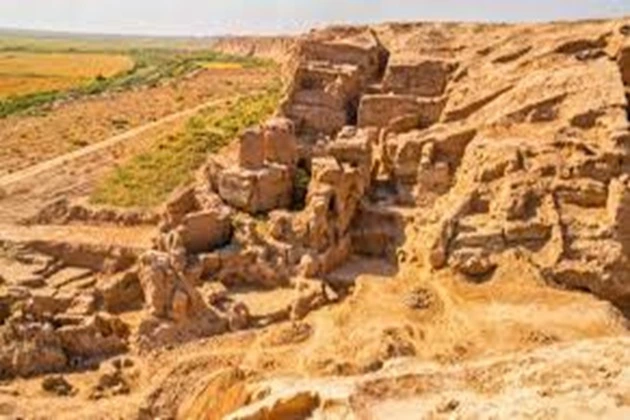
By the middle of the IV century AD, the once great Kushan Empire had practically ceased to exist, and other states were gaining strength. The legacy of the Kushan Empire has been preserved in the cultural, religious, and artistic development it fostered. Still, the political entity itself has faded into history, leaving behind only the remnants of a once dynamic and cosmopolitan civilization.
For some time, the remnants of the Kushan rulers retained the status of “small Kushans” who ruled locally in the Punjab region, with the capital in the ancient city of Taxila. Several kings of the Lesser Kushans were probably vassals of the Indian Gupta rulers. However, over time, even the last remnants of the Kushans faded into obscurity, and by the end of the 5th century AD, they no longer existed.
Thus, it ended the story of the mysterious Central Asian civilization. The absence of historical texts by the Kushans themselves meant that much of their history and identity remained somewhat of a mystery. The primary source for studying their history is the writings of their neighbors, primarily the ancient Chinese. Despite this, the achievements of this short-lived Empire can be described as simply outstanding. Even centuries after their disappearance, the Kushans fascinate scientists, historians, and enthusiasts.




